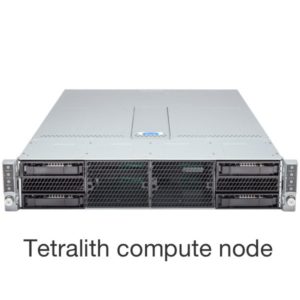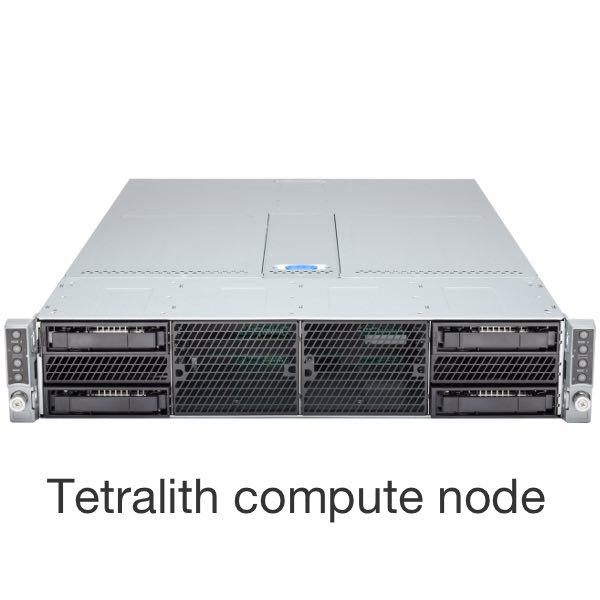 Today Sweden’s National Supercomputing Centre (NSC) at Linköping University announced it has awarded ClusterVision a contract to build its new flagship cluster, Tetralith. Available to all researchers in Sweden, the 4 Petaflop machine will be Scandinavia’s most powerful yet with 60,544 cores based on Intel Xeon.
Today Sweden’s National Supercomputing Centre (NSC) at Linköping University announced it has awarded ClusterVision a contract to build its new flagship cluster, Tetralith. Available to all researchers in Sweden, the 4 Petaflop machine will be Scandinavia’s most powerful yet with 60,544 cores based on Intel Xeon.
Tetralith will be used primarily for simulations related to materials science, fluid dynamics, quantum chemistry, and the growing area of bioinformatics. All researchers in Sweden will be eligible to apply for computing time through the Swedish National Infrastructure for Computing (SNIC).
Tetralith will be the most powerful university computer in Sweden by a large margin, nearly twice as fast as the next most powerful, at KTH [Royal Institute of Technology]. I’m really looking forward to allocating time on the new computer to the best Swedish researchers and their fascinating projects. It’s very gratifying to see that Sweden is investing heavily in remaining at the forefront of providing computer resources,” says Philipp Schlatter, docent at KTH Royal Institute of Technology and chair of the SNIC resource allocation committee.
ClusterVision has also been awarded the contract to replace the university’s Gamma research cluster. That cluster, named Sigma, will contain 3,456 Intel cores and will (like Tetralith) be based on Intel Omni-Path high speed interconnect. Both clusters will greatly enhance Sweden’s capacity for scientific research and discovery.
The commissioning of Tetralith and Sigma will mark the continuation of a fruitful partnership between NSC Linköping and ClusterVision. In 2014, ClusterVision delivered and installed Bi and Frost, two Intel-based clusters used for meteorological research and operational weather forecasting in Sweden and Norway. These clusters entered the TOP500 list of the world’s fastest supercomputers in 2015. ClusterVision received both contracts on the basis of superior performance values.
As said, Tetralith will be the centre’s largest supercomputer in terms of cores and maximum performance. Tetralith will have a total of 60,544 Intel cores across 1,892 nodes and a maximum computing speed exceeding 4 petaflops. Sigma will consist of 3,456 cores in a 108-node configuration. Both are based on Intel HNS2600BPB compute nodes racked in 2U Intel H2204XXLRE chassis. Nodes also contain the Intel Xeon Gold 6130, for a total of 32 CPU cores per compute node. The 6130 comes out on top in terms of performance on the applications used for benchmarking.
The 100 Gbps Intel Omni-Path interconnect is the fastest available for this configuration. Intel Omni-Path is already being used by NSC in their existing storage installations.
High performance computing enables faster and more robust scientific discovery by significantly enhancing data processing capability. We are now capable of discovering insights that would not have even been possible just ten years ago, due to advances in computing power and data processing capacity alone.
This is why HPC systems are an essential component of Swedish (and worldwide) research. The supercomputing centre’s previous flagship cluster, Triolith, provided easy access to great computing power for researchers all across Sweden. Its replacement Tetralith will be ten times faster, ensuring Sweden’s greatest minds have access to the world’s most advanced technology.




